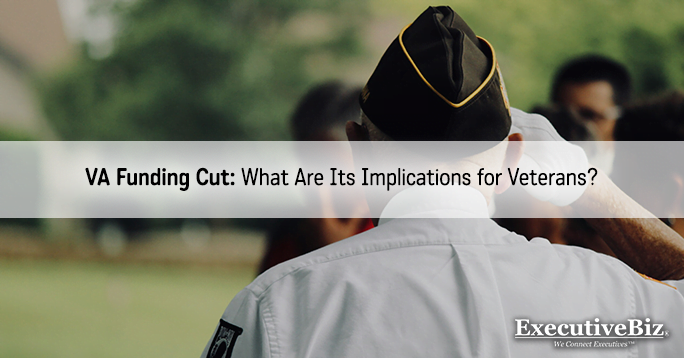The VA funding cut proposals have sparked concerns regarding the potential ramifications on services vital to veterans.
As the support pillar of those who served the nation, the U.S. Department of Veterans Affairs (VA) brings forth crucial services, including medical care, mental health resources, housing, and employment. The proposed budget cuts threaten to diminish these services that countless veterans rely on.
Discover the implications of budget reductions and what they mean for the veterans who rely on these services.
The Department of Veterans Affairs and Its Crucial Role

The Department of Veterans Affairs (VA) is a Cabinet-level executive branch dedicated to supporting veterans after their military service. It operates three administrations: the Veterans Health Administration (VHA), the Veterans Benefits Administration (VBA), and the National Cemetery Administration (NCA).
Below are the missions of each administration.
Veterans Health Administration
The Veterans Health Administration is the largest integrated healthcare system in the United States. It operates 1,255 healthcare facilities across the country, including 172 medical centers and 1,138 outpatient clinics. These facilities serve approximately 9 million veterans annually.
The VHA provides a wide variety of medical services to eligible veterans, such as:
- Surgeries
- Medical treatments
- Acute care
- Specialized care
- Health exams
- Health education
Veterans Benefits Administration
The VA supports service members transitioning from military service to civilian life through the Veterans Benefits Administration. The VBA benefits include:
- Disability compensation
- Education and training
- Life insurance
- Vocational rehabilitation
- Job placement assistance
- Home Loans
National Cemeteries
The National Cemetery Administration’s (NCA) primary mission is to guarantee that the service and sacrifices of veterans are forever honored.
With over 150 cemeteries across the mainland United States and Puerto Rico, the NCA provides dignified burial services for veterans and eligible family members. These cemeteries are maintained as national shrines, serving as solemn reminders of the sacrifices made by veterans.
The administration’s burial and memorial benefits comprise:
- Opening and closing of the grave
- Continual maintenance
- A burial flag
- A headstone
- A presidential memorial certificate
In addition to traditional burial services, the NCA offers digital memorialization through the Veterans Legacy Memorial to immortalize the veterans’ legacy, service, and sacrifice.
Fourth Mission
Beyond its primary responsibilities, the VA has a “Fourth Mission” to boost the nation’s readiness for emergencies. It supports national, state, and local efforts related to war, terrorism, natural disasters, and public health.
Moreover, the VA develops plans and courses of action to guarantee continued service to veterans during challenging times.
How the Department of Veterans Affairs Allocates Its Budget
Each year, Congress allocates funds from the federal budget to support the VA’s range of services to eligible veterans. The department then distributes these funds to healthcare, compensation, education, and other supportive services.
In the fiscal year 2022, around 50.5% of the VA’s budget was earmarked for veterans’ compensation related to service-connected disabilities, dependency and indemnity compensation (DIC) for service-related deaths, and pensions for nonservice-related disabilities. Meanwhile, its second-largest expenditure was directed toward medical care.
Furthermore, the VA offers education benefits to veterans and their families through programs like the Post-9/11 GI Bill. In March 2019, the VA reported spending approximately $10.7 billion on 700,000 beneficiaries of the Post-9/11 GI Bill.
FY24 VA Funding Overview
In FY2024, the Department of Veterans Affairs requested a total budget of $325.1 billion, a notable increase of $16.6 billion (+5.4%) from the budget enacted in FY2023. Of this amount, $142.8 billion is allocated for discretionary spending, a $3.0 billion (+2.1%) rise from the previous year.
While the funding levels approved for the VA in FY24 closely aligned with the budget proposed by the Biden administration, adjustments were necessary to comply with the spending limits set by the Fiscal Responsibility Act (FRA). FRA, in particular, addresses federal spending, the debt ceiling, and other critical federal finance areas.
VA Funding Cut Implemented Amid Budget Constraints
Congress is facing budgetary constraints amid conflicting priorities, resulting in debates on fund allocation. As a result, Congress implemented budget cuts affecting several government programs, including those administered by the VA.
Notably, Congress rescinded $2.6 billion in unspent funding from previous years, particularly targeting areas such as medical services, Electronic Health Record Modernization (EHRM), IT, and administrative expenses. Specifically, Congress reduced funding for EHRM by $460 million from existing balances and cut $529 million from the Biden administration’s proposed budget for EHRM in FY24.
How Will the Proposed VA Funding Cut Affect Veterans?

The Department of Veterans Affairs seeks a budget of $369.3 billion for fiscal year 2025, nearly a 20% rise from enacted levels. It should support the expansion of VA healthcare benefits under the PACT Act, extending eligibility for exposure to toxic substances.
However, despite the Biden administration’s proposed allocation budget for the VA, no funds are explicitly designated for deploying the updated electronic health record (EHR) system. The FY25 request allocates only $894 million to modernize the department’s EHR system, significantly less than the proposed FY24 funding.
Simultaneously, the VA implements hiring freezes and cost-cutting measures in response to budget shortfalls and rising costs. Medical center directors are restricted from filling vacancies with external hires. Individuals already in the hiring process are yet to receive a formal job offer or have their applications discontinued.
Other potential effects of the VA funding cut include:
- Reduced access to care
- Increased claims backlog
- Prolonged waiting periods for benefits
- Weakened cybersecurity and telehealth services
- Deterioration of VA infrastructure
In a nutshell, the VA funding cut directly impacts veterans’ access to quality health care, availability of specialized services, and efforts to modernize care delivery.





